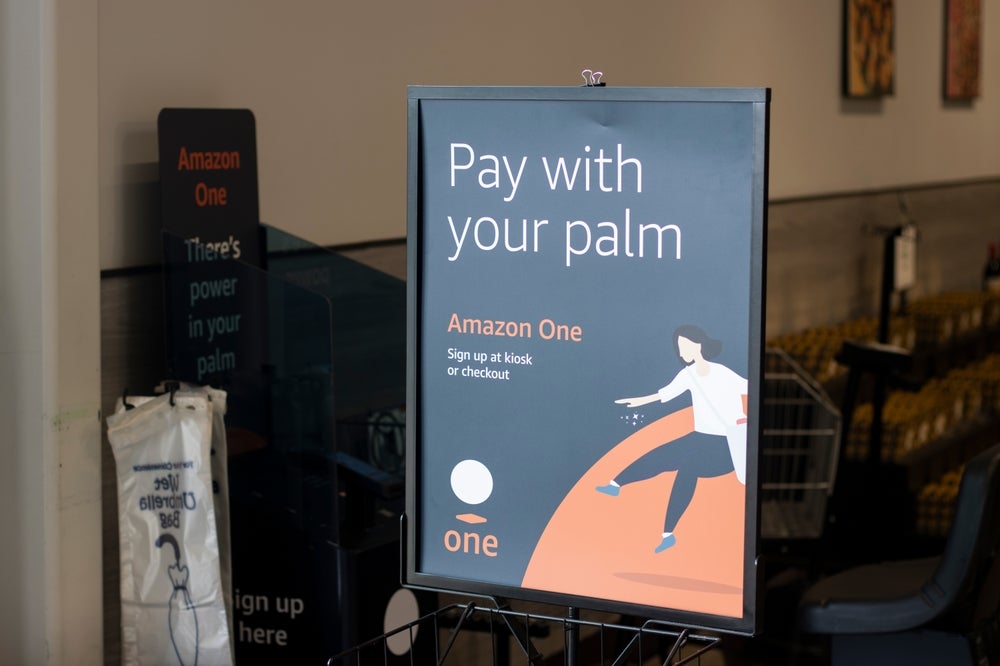Could 2010 be the year that contactless payment reaches
the tipping point and becomes a mainstream payment tool? The
payment networks seem to think so, and recent roll-outs indicate
that banks are also very much on board. Victoria Conroy looks at
the latest developments.
 After several years of
After several years of
being hyped as the next big thing in payments, contactless looks
set to finally gain widespread acceptance. Although the technology
has been around for six years, it is now well established in the US
and Asia-Pacific regions and is beginning to make its mark in
Europe.
But this growth has not been
without some challenges, and some estimates about the success of
contactless have been very wide of the mark.
Looking at the US, according to US
payment consultancy First Annapolis, contactless payment acceptance
expanded in 2009 with the number of participating outlets growing
some 30%.
First Annapolis states that
contactless has been billed for years as a leap forward for
electronic payments that would provide new ammunition in the quest
to displace cash. That excitement often led to big predictions
about the future; predictions which have mostly failed to
materialise.
How well do you really know your competitors?
Access the most comprehensive Company Profiles on the market, powered by GlobalData. Save hours of research. Gain competitive edge.

Thank you!
Your download email will arrive shortly
Not ready to buy yet? Download a free sample
We are confident about the unique quality of our Company Profiles. However, we want you to make the most beneficial decision for your business, so we offer a free sample that you can download by submitting the below form
By GlobalDataIn one particularly dramatic
example, a research company reduced its forecast for the number of
contactless cards that would exist in 2009 by nearly 70%.
Even though the number of
contactless cards in circulation in the US is around 100m, a wide
penetration gap exists between issuers and acquirers with regard to
contactless payments.
Currently, about 10% of US cards
support contactless, but a mere 2% of US retail outlets are enabled
with the technology, indicating that the business case to date is
far less obvious to both merchants and their acquirers, and the
main stumbling point is the cost of upgrading to contactless
terminals and infrastructure.
2010, the year of
change
According to the payment networks
Visa and MasterCard, which have relentlessly pushed contactless
technology worldwide, the end of this year and 2011 could see
contactless going mainstream in Europe.
According to Visa, the number of
Visa-branded contactless cards in use in the UK is expected to
reach 12m by the end of 2010. The number of Visa contactless cards
in circulation passed the 8m mark in June and this will continue to
climb throughout the rest of 2010 as more banks introduce the
functionality on their customers’ Visa cards. Helping this growth
is the fact that earlier this year, the contactless transaction
limit was raised from £10 ($16) to £15, increasing the scope and
range of transactions that can be captured by the technology.
Figures from Visa show that in the
UK, the average transaction value is currently £4.30, indicating
that contactless is increasingly being used in place of cash for
everyday transactions.
For the retailers who have signed
up to accept the technology, they are benefiting from significantly
quicker transaction times, higher volumes of customers and an
increased average spend of up to
33%.
Displacing
cash
From a seemingly slow start, why
has contactless payment experienced such a surge in usage over the
past two years in particular? According to Visa Europe, in its
report “The Future of Electronic Payments”, which examined consumer
payment preferences between October 2008 and September 2009, the
recent recessionary environment has played its part in spurring
interest for a variety of reasons.
For many European consumers,
anxious to control their spending, debit cards had indeed become
the ‘new cash’. In their perception, their debit card had become
largely interchangeable with cash, sharing many of the same
attributes.
Another notable trend is that
Visa’s debit business, which accounts for 64% of all European Visa
cards, and 75% of total sales volume, the number of point of sale
transactions increased by nine%, with the value of POS spending
increasing by more than six% to reach €596bn ($830bn).
Strong debit markets such as the UK
would appear ripe to engage with the contactless revolution.
According to figures from the UK Cards Association, debit card
usage rose £7.9bn
from the second quarter of 2009 to the same period in 2010, up
12.4%, but also ate into cash payments – the amount of cash
withdrawn from ATMs was
£1.6bn lower than in the second quarter of 2009, a decline of
3.2%.
All of this is welcome news for
those in the war against cash, but there are still many merchants
and consumers who are not aware of the potential benefits of
contactless, leaving a massive opportunity to displace cash even
further.
According to Retail Banking
Research, between 2000 and 2008, the number of retail cashless
payments grew by over 160% to 87bn transactions. Of these, 90% were
in Western Europe, 10% were in Central and Eastern Europe, and
two-thirds were in the eurozone.
Distributing, managing, handling,
processing and recycling cash costs the industry around €84bn each
year, equivalent to 0.6% of Europe’s total GDP or €130 per
person.
The number of cash payments is
forecast to fall by 2.3% per year in Europe up to 2014. However,
despite this slow decline, cash will remain the predominant payment
method for some years to come, still representing 63% of the
continent’s 414bn payments in 2014.
But there is a glaring
contradiction. When looking at the different European markets, some
have taken to contactless much more quickly than others, and the
main factor appears to be the level of cash payments. Where
contactless has been introduced in markets with a high level of
cash payments, it has appeared to have been adopted by consumers
with greater enthusiasm than in markets where payment cards are
more widely used.
The shift to different form
factors
Some countries with relatively
young populations, such as Turkey and Poland, are notable in that
consumers, particularly Generation Y consumers, have taken to the
technology rapidly, and there is a move underway from contactless
payment cards to other form factors such as fobs, tags, stickers
and mobile phones.
Indeed, it is widely expected that
the mobile phone incorporating Near Field Communication (NFC)
technology will become the de facto device for contactless.
In May 2010, Visa Europe launched
NFC mobile payment projects in Poland, incorporating the first
SIM-based contactless mobile payments project in the country. Using
an over-the-air (OTA) solution for remote SIM-card management, a
contactless payment application will be stored on the phone’s SIM
card.
The project represents the first
service in Europe whereby consumers can walk into a Plus mobile
phone shop and purchase a Samsung NFC handset capable of supporting
Visa mobile payments.
BZ WBK was the first bank in Poland
to launch contactless payment cards and already has over 150,000
contactless cards on the market. The initial target for the mobile
project is young, technology-savvy teenagers who have already
adopted contactless payments on cards.
By the end of the year, the number
of contactless terminals in Poland is projected to reach more than
12,000 and the number of contactless cards to top twom, provided by
eight Visa Europe member banks including BZ WBK.
In Turkey, Visa Europe launched NFC
mobile payment trials for customers belonging to six leading banks:
Denizbank, Finansbank, Halkbank, Bankası, Vakıfbank and Ziraat
Bankası. Turkey represents one of the fastest growing markets for
electronic payments in Europe and has already embraced contactless
technology for payment cards.
As of March 2010, over onem
contactless Visa payment cards have been issued in Turkey thanks to
19 commercial card programmes. The 30,000 locations providing the
underlying acceptance infrastructure also support mobile projects
in the country.
In September 2010, Visa Europe
partnered with Turkey’s Akbank and device manufacturer
DeviceFidelity to launch Turkey’s first contactless Micro-SD mobile
payment service.
It will enable mobile phone users
in Turkey to make mobile payments at all Visa contactless points of
sale worldwide by inserting an NFC-enabled memory card (Micro-SD)
into their mobile phone.
Akbank Deputy CEO Hakan Binbagil
said: “Many Turkish people attach importance to mobility, follow
technology closely and adopt new innovations quickly. At Akbank, we
try to follow these trends in the market closely, to interpret the
trends, and to shape how these are implemented by the banking
industry. Turkey has 85m mobile phone users and a very young
population which paves the way for an increase in ‘independent
banking’ using mobile technology.”
Supply of handsets
critical
Visa Europe regional general
manager, Berna Ülman said: “One of the key challenges to the
success of mobile payments is the supply and availability of NFC
handsets.
Until a majority of mobile handsets
offered in the market are supplied with integrated NFC, Visa is
proactively working with innovators like DeviceFidelity and
pioneers such as Akbank to harness the potential of new
technologies. These solutions make the future of payments real
today and are key to accelerating mobile payments in Turkey and
across Europe.”
It will be some time before NFC
mobile payments gain traction in Europe, but according to US
payment consultancy Celent, players in the US and Europe would do
well to follow Japan’s example and to lay the groundwork for faster
and more successful implementations.
The Japanese market is frequently
cited as proof that such payments have a future. However, Japanese
market reality is not as much of a straightforward success as many
believe.
Based on primary research with
leading mobile carriers, banks, payment services/brands, and
technology vendors, Celent estimates that there are 28m registered
mobile payments accounts in Japan.
Furthermore, Celent estimates that
there are about 20m active mobile payments accounts. Respectively,
these constitute 24% and 17% of all contactless payment
accounts.
Japanese ecosystem differences must
be considered when applying its lessons abroad. However, there are
a number of lessons from Japan which transcend market ecosystems.
In brief, these include the following:
- Consumer adoption takes time, even
among a tech-savvy population. - For consumers, the actual payment
(i.e., financial settlement) component of mobile payments is
irrelevant; incentives are what matter above all. - Merchants feel the same as
consumers; financial settlement matters little, whereas the ability
to leverage mobile technology for promotions and sales lift is
crucial. - Mobile contactless payment
technology opens new business opportunities and thus invites new
market entrants; Japan shows that non-financial institution
disintermediation in the payments space is a real threat. - Inter- and intra-industry collaboration is a key success
factor. As different industries play a crucial role in mobile
contactless payments, no one industry can expect to go it
alone.








